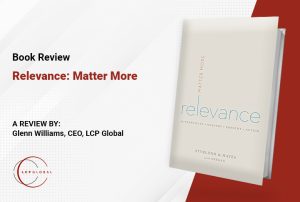What if I recruit the wrong person? How do I make sure I get a return on my investment and not lose this person to a competitor? Do we need to first make sure we have the strategy bedded down?
These are some of the most frequently asked questions I get from leaders in relation to succession planning and the ability to project what talent the organization needs to take it to the next level.
Tappin and Cave conducted research on 150 global chief executives and found that leading at the top of an organization today is very different than it used to be—and that is followed closely by the challenge of managing and retaining talent.
In their survey of FTSE 100 CEOs in the U.K., 68 percent put the ‘talent and human capital agenda’ as their number one priority. In 2007, 74 percent of 600 U.S CEOs listed it as a ‘very significant challenge’ (Tappin and Cave, 2008, pp. 114).
Jim Collins, in Good to Great, found that it wasn’t strategy that set the successful companies apart, but the companies who –
“first got the right people on the bus, the wrong people off the bus, and the right people in the right seats – and then they figured out where to drive it” (Collins, 2001, pp. 13).
This is why many organizations are paying even greater attention to who they hire and why they are also starting to invest more in developing and retaining talent, with the belief that there will be a significant ROI for the organization longer-term.
I recommend the book Finding & Keeping the Best People, which includes a chapter by Jean Martin and Conrad Schmidt, who present a core set of 10 ‘best practices’ for identifying and managing emerging talent (Martin and Schmidt, 2011, pp. 137).
Three of the10 include:
- Testing candidates in three dimensions: ability, engagement, and aspiration
- Emphasizing future competencies
- Creating individual development plans
The CEO is much more like a conductor that ‘creates and orchestrates a system” (Tappin and Cave, 2008, pp. 218).
What’s the bottom-line?
There is a collision of values, ideals, and expectations in organizations that make recruiting and managing talent a function of leadership, which demands no small amount of discernment and rigor. Perhaps this is why Fairholm describes leadership as ‘an exercise in creativity’ (Fairholm, 2000, pp. 106). Below are some additional questions to reflect on:
- What lessons can I learn from previous hiring decisions? (Don’t default to the negative!)
- If I have lost key talent from my organization, what contributed to this, and what can I change to provide more incentives for talent to stay?
- Understand what motivates existing talent to remain with the company, and how might I leverage that in the future.
References
Collins, Jim. (2001). Good to Great: Why Some Companies Make the Leap…and Others Don’t. New York: HarperCollins.
Fairholm, Gilbert W. (2000). Perspectives on Leadership: From the Science of Management to the Spiritual Heart. London: Praeger, 2000.
Martin, Jean and Conrad Schmidt. (2011). “How to Keep Your Top Talent”, Finding & Keeping the Best People. Boston, Massachusetts: Harvard Business School of Publishing.
Tappin, Steve and Andrew Cave. (2008). The Secrets of CEOs: 150 Global Chief Executives Lift the Lid On Business, life and leadership. London: Nicholas Brealey Publishing, 2008.



